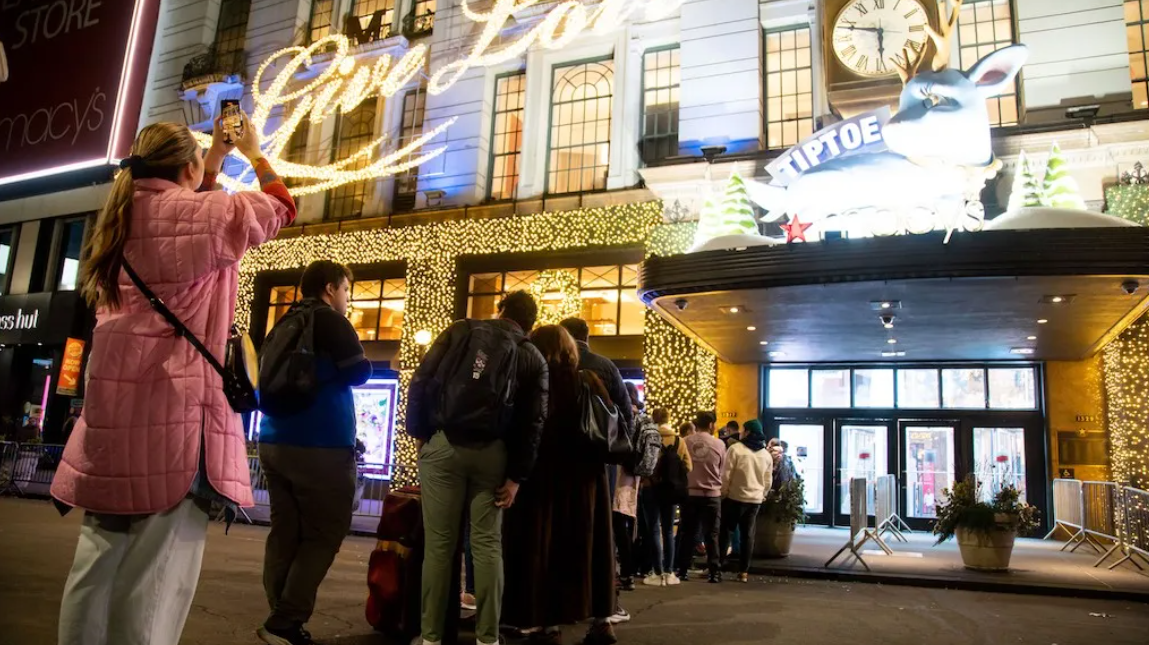Mastercard Predicts 3.7% Holiday Sales Gain
Holiday retail sales in the U.S. will rise 3.7 percent in a 2023 season marked by “normalizing” omnichannel trends, according to Mastercard.
Executives from the giant payment processing company pointed out that the 3.7 percent rate pertains to the Nov. 1 to Dec. 24 period, and is in nominal numbers, which excludes inflation. That means that real holiday sales, which do factor in inflation, will be relatively flat. Mastercard’s forecast also excludes auto sales.
“It’s going to be a solid holiday season. The consumer is healthy right now and they’re spending. But they’re going to be very selective. They’ve got a lot of choices,” Steve Sadove, senior adviser to Mastercard and former Saks Inc. chairman and chief executive, told WWD.
The 3.7 percent growth rate is “a healthy number, but it’s not a blowout number,” Sadove said, who noted that the growth is on top of the 7.6 percent sales gain in holiday 2022.
“The consumer will be spending, but they’re going to be very purposeful in what they’re spending on,” said Sadove. “They’re going to be very selective in categories. Value will be very important in the consumer behavior. It will be a more normalized year relative to real growth but a massive change as you get into the categories.”
Among Mastercard’s forecasts:
- E-commerce sales rise 6.76 percent
- In-store sales grow 2.9 percent and account for about 80 percent of the retail business.
- Apparel sales rise 1 percent.
- Jewelry is down 0.3 percent
- Electronics rise 6 percent.
- Groceries are up 3.9 percent.
- Restaurants rise 5.4 percent.
“E-commerce is not taking over the stores. It’s omnichannel. Both e-commerce and stores are growing,” said Sadove.
“It’s back to more normalized types of behavior,” he added, citing iPhones, gaming and electronics again being a big part of the holiday story, as well as restaurants continuing to do brisk business. “We’re calling out things like restaurants and electronics doing much stronger than apparel,” Sadove said.
“Retailers have been cautious in their purchasing,” he said. “They’re going to be promotional. But they got very burned during the pandemic and in the aggregate, you’re going to see inventories well under control, which means that while there’ll be promotions, it’ll be more normalized promotions. It’s not going to be 70 off or whatever that you saw at the height of the pandemic when there was much too much inventory.”
While Mastercard is forecasting for the Nov. 1 to Dec. 24 stretch, many retailers are expected to trigger holiday campaigns and promotions as early as October this year, as they did last year, extending the season.
“Our baseline view is that we will see continued expansion in the economy,” said Michelle Meyer, U.S. chief economist at the Mastercard Economics Institute. “The market will continue to see job creation along its recent rate.
“The consumer holds the power,” said Meyer. “Shoppers have retained and recouped a lot of the power because supply chains have largely been fixed. Inventory is back to normal levels. And over the last few years, there’s been a lot of new innovation and choices for the consumer in terms of what they’re buying, how they’re buying, and where they’re buying. On top of that, consumer expectations have really shifted as they’ve come into a more disinflationary, low inflationary environment,” running in the mid 3 percent range.
“Overall holiday sales last year were quite robust, but it wasn’t robust evenly throughout the season,” Meyer observed. “Quite the contrary, you had these moments where you had a rush of spending and activity where Prime Day took off pretty strong, early November was quite sluggish and there was this big acceleration during the Black Friday period, a softening again in early December and this rush of activity right before Christmas into the end of the year. To me, that’s a really good indication of what’s to come this holiday season. And I think even more so this holiday season.”
With electronics, where sales were down last year, “You could argue the replacement cycle might be already underway,” said Meyer. “New technologies and advancements out there certainly seem to be enticing a lot of consumers and could provide some support for things like electronics. So it will be a divided basket again, gifting experiences and spending on moments in time where you have these shared experiences seem very likely to gain a lot of support. And generally speaking, it’s a consumer that will be much more targeted, focused on these moments in time, focused on promotions, and feeling as though they really have regained a lot of power during this holiday season.”
In addition, Meyer said the economy “has been much more resilient, much stronger than a lot of people expected. And much of that relies on the consumer being supported by the labor market. So the unemployment rate is still hovering close to record lows (3.8 percent at the end of August), job creation still running at between 150,000 to 175,000 jobs per month above a normalized rate, and wage growth is still running above its normalized pace as well. For the consumer, being very much driven by what happens in the labor market, it’s a powerful and strong story heading into next year, and heading into this holiday season as well.”
Meyer did cite some risk factors from external forces that could change the outlook, whether that’s the auto strike, particularly if it lasts a long time, the potential government shutdown, or the concerns around student loan repayments.
“There are a number of potential speed bumps out there to pay very close attention to that could be hitting right around the same time that people are gearing up for their holiday season,” Meyer said. “But our sense of it is that the economy is on a solid footing right now and will be able to handle some of these risk factors.”
